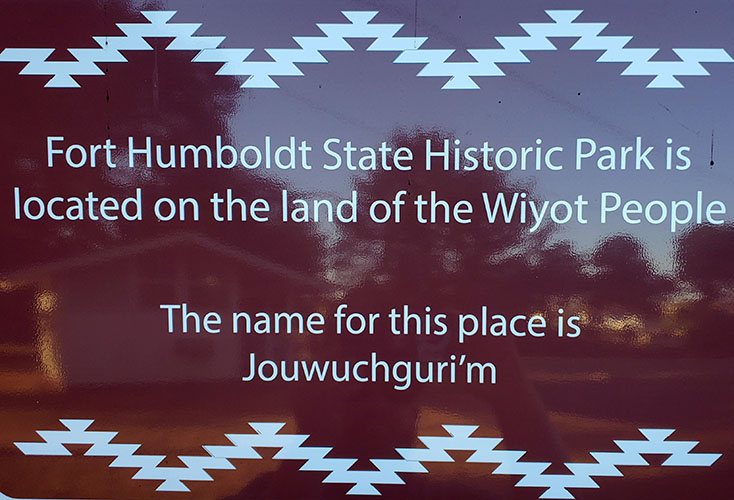School Resources
Explore Fort Humboldt State Historic Park on YouTube!
Special Events
 Guided tours for both the public and school groups are available year round, by request. Volunteer docent lead guided tours are limited to certain days of the month from November - April, and available weekly from May - October Please use the below link to request a guided tour of the Fort or email forthumboldtfieldtrip@gmail.com.
Guided tours for both the public and school groups are available year round, by request. Volunteer docent lead guided tours are limited to certain days of the month from November - April, and available weekly from May - October Please use the below link to request a guided tour of the Fort or email forthumboldtfieldtrip@gmail.com.
- County, State & U.S. History
- Indigenous Peoples / Pioneer Relations
- U.S. Military's Role
For other events at this location, and parks throughout the North Coast Redwoods District, please visit the District's Facebook Page.
Guided Tours
Volunteer docent-lead guided tours provide an opportunity for visitors to connect with the deep and complex history that this Fort represents.
Guided tours for both the public and school groups are available year round, by request. Guided tours are limited to certain days of the month from November - April, and available weekly from May - October Please use the below link to request a guided tour of the Fort or email forthumboldtfieldtrip@gmail.com.
California State Parks North Coast Redwoods District’s Fort Humboldt guided tour relates an inclusive, complex and accurate account of Fort Humboldt's role in the 19th Century military occupation of Humboldt Bay in support of the area's burgeoning Euro-American colonization.
Like a large number of historic sites in California, Fort Humboldt shares a complex, and often disturbing history of California. Coupled with and fueled by California’s Gold Rush and Statehood, Fort Humboldt is a site that represents a direct physical remnant of 19th century colonialism.
Acts determined by both Federal and State policies lead to often?deadly, life altering consequences for California Native Americans, who have called this area home since time immemorial. The influx of?Euro-American immigration to and the military occupation of Humboldt Bay, along with its resource rich surrounding lands lured an ever-growing number of immigrants. As that population grew so to did competition for access to food resources, often resulting in Native people raiding supplies and livestock in order to adapt to the changing conditions.
Conflicts ensued prompting genocidal violence and forced removal of the Native people from their lands to Federal reservations. In addition to the loss of Native lands, State policies created an industry of indentured servitude, an unfree labor practice mirroring slavery.
This practice resulted in the widespread trafficking of Native people creating a cultural diaspora and dilution of this area's Indigenous civilizations. The State's endorsement of indenturing men, women and children knew no bounds throughout this period. All the while there was no legal recourse in place for an Indigenous people, nor consequences to those who committed crimes against humanity.
Sharing only the military piece of the Fort Humboldt history would not come close to capturing all that this place, and this historical period represents. This would lead to an unbalanced perspective of Fort Humboldt's role in this area's development. The inclusion of California Native Americans' lived experiences in this story acknowledges how this historic site represents a painful reminder of that history to their?descendants. By sharing the complete story of Fort Humboldt, it is our hope that this will provide healing support to the ongoing cultural revitalization being undertaken by many of the area's Indigenous people and their communities.
Fort Humboldt sits on the ancestral lands of the Wiyot people. Please visit the Wiyot Tribe’s website to learn more. https://www.wiyot.us/

